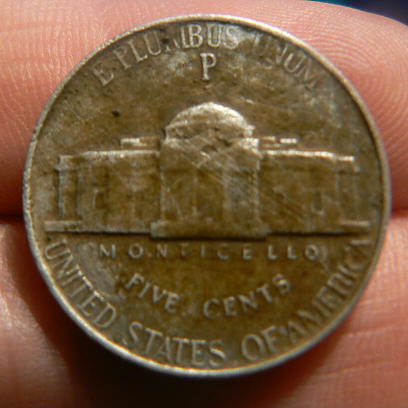Got out for a bit to one of the first sites I used the E-Trac at. I had high hopes, as I had no idea back then how to use the machine, or how to work a site, and the last time I was here I pulled a random merc and a clad half dollar, both extremely constructive signs (as I learned later), that the site has (perhaps honeyhole) potential.
But it was not to be today. The site doesn’t appear to have been hunted too hard, but probably didn’t have the density to support massive silver drops. Oh well, write it off.
Did get a war nickel today, tho, and another clad half dollar. Are you kidding me? Clad half dollars are rare (rarer than silver half dollars, actually, at least in my experience (and they are really rare also)), and always suggest an under hunted site, and this is the first site I’ve ever pulled two from, but the site just not would give up much shiny.
As for the war nickel, CO of 12 (for you non-E-Trac’ers, is always a normal nickel, if not trash or gold). Rare to find a war nickel there (they usually live at CO 15-16). I once found a war nickel at CO 22, which is also bizarre. This tells me war nickels have extreme variability in the CO number (despite the E-Trac being otherwise legendary in target ID). Why is that? Who knows? BTW, these coins air tested at CO 12 and CO 22, respectively, so its not cause they were affected.
So, the scientist in me wants to know why this is. There is no such variability in other coins (for the clueless, CO numbers are influenced by the conductivity of the metal, the thickness of the coin, and in the case of copper coins, the corrosion/patina).
Corrosion and thickness with war nickels is not an issue, it is a constant. So, it has to come down to composition. Regular nickels, surprise, are mostly copper (75%), and 25% nickel. Copper is a high metal, but nickel is a very low metal (almost like iron), so it makes sense that an alloy of copper and nickel could ring quite low.
However, war nickels are 56% copper, 35% silver, and 9% manganese. That’s 91% high tone metal — it makes sense that they ring, normally, a bit higher than normal nickels, but they should ring much much higher, especially given their size and thickness. I can’t image the 9% manganese having a material effect (the nickel in clad dimes and quarters does not have much of a material effect on those), regardless of how low a metal manganese is.
So, the answer is that I have no clue why war nickels ring so low, given all the high tone metal they contain, and, more importantly, for those wishing to dig war nickels, and to avoid modern nickels, why the CO, in an air test, varies between 12 and 22. That’s a huge range. I guess the bottom line is, that if you are fishing for war nickels, dig em all. Too bad, cause dig em all is almost always a bad idea, especially in this rock hard dirt.

